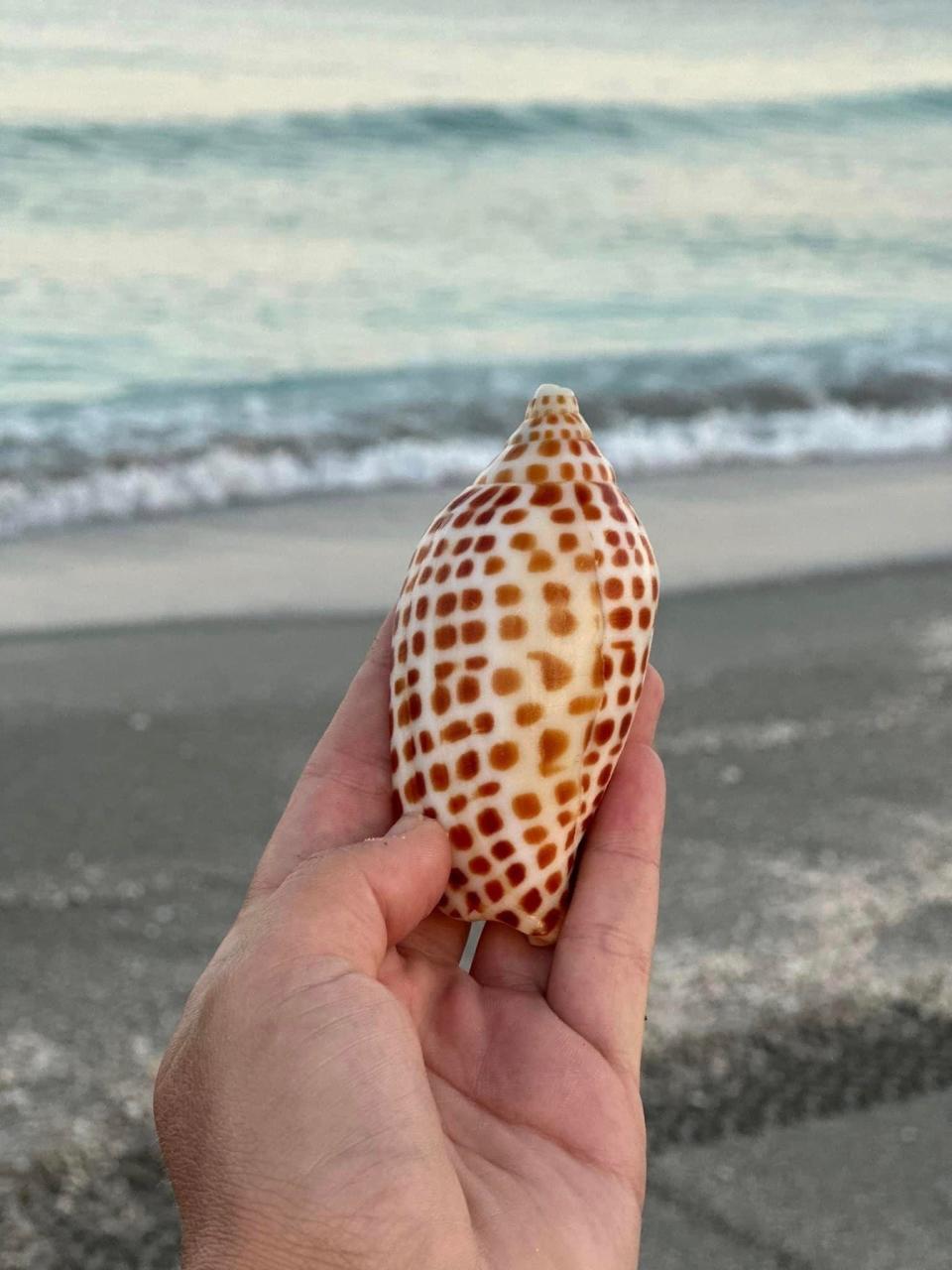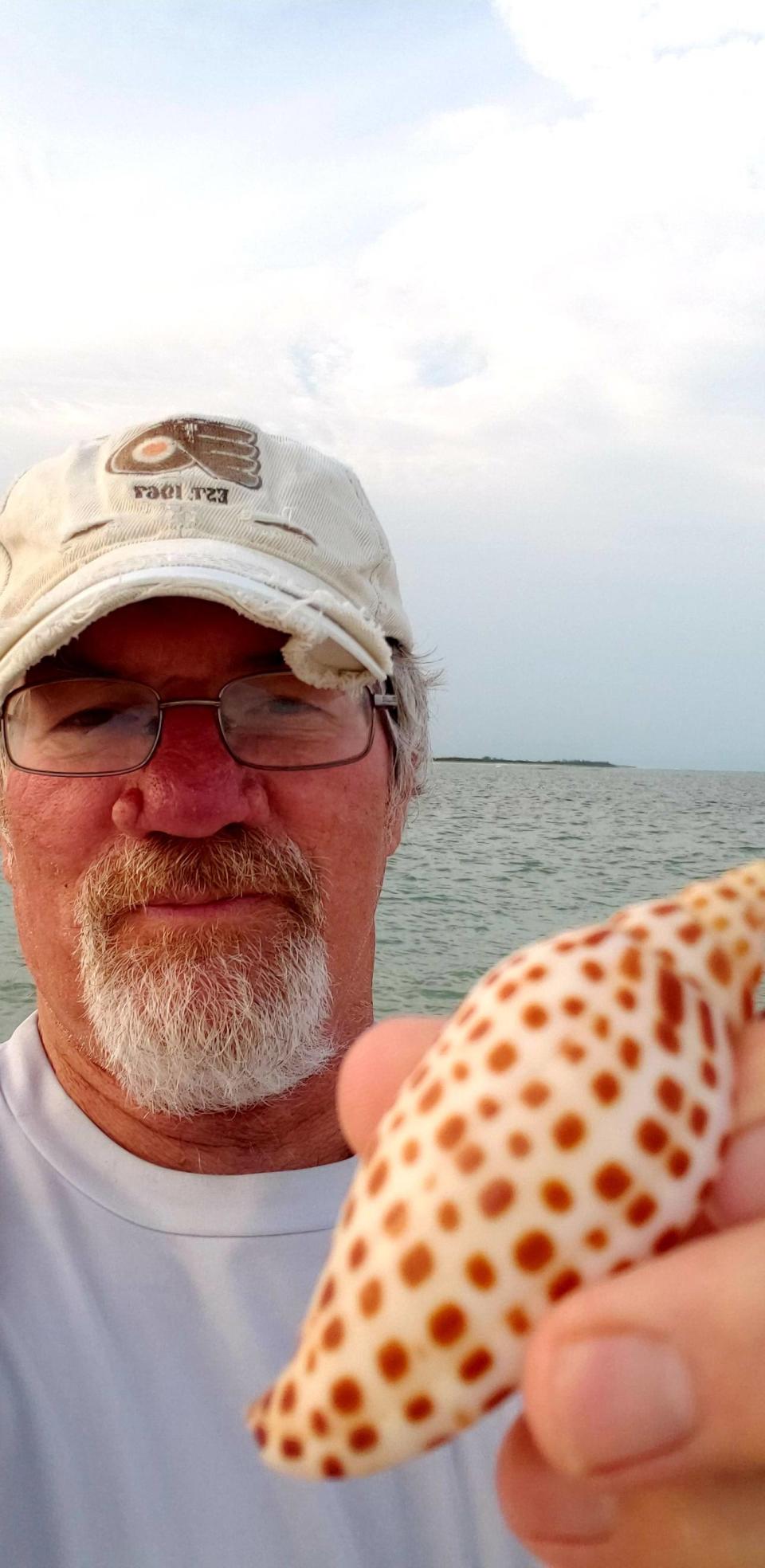Beach life: Elusive Junonia not so elusive this year? Shell expert answers our questions
To say there's an obsession by shell-seekers to find a Junonia shell would not be a far-fetched way of describing the quest.
Especially if you are scrolling through one of the several Facebook groups for Sanibel Island where finding, or looking for, the Junonia has been one of the most popular posts this year.
There are the lucky ones who find a Junonia and are recognized in the comment threads with "Welcome to the J-club!" Or, "Congratulations on the best find!" And, "Very rare to find on the beach; lucky you!"
On the other end of the spectrum are comments like: "My 25-year quest continues" and "40 years. Still looking."
So, should you feel lucky if you find a Junonia on a Sanibel beach or any beach in Southwest Florida?
Is it one of the rare shells you can find despite the high number of posts on social media we have seen this year?
We asked an expert, and no one fits that title better than José H. Leal, Ph.D., the Science Director & Curator, Bailey-Matthews National Shell Museum on Sanibel. Here is a Q&A we did with Leal with the focus on the rarity of finding a Junonia and how it appears as if 2023 has been a good year for finding one:
What have you been hearing this year about people finding Junonia shells? Is it true that more Junonia's are being found than in past years, as people are saying on social media?
LEAL: Yes, there seems to be a flurry of new Junonia finds this year. I don’t have any hard data to back this up, but perhaps the havoc wreaked by Hurricane Ian along our coastline caused some of the Junonias living in shallower water to get closer to shore?

Or, is this just wishful thinking? Maybe more people are posting photos of their Junonia's on social media and that is giving us the impression more are being found?
LEAL: While it is true that more and more people are reaching out through social media to broadcast their accomplishments, I’ve seen lots of finds this year in social media this year. Hard to compare, however, without a precise count comparing this year’s to data from previous years.
Why is the Junonia considered a great, or rare find?
LEAL: The Junonia is the Florida emblematic shell; its color pattern of dark spots against an ivory white background is super attractive, and its shape, weight and size make it a nice object to hold and display. And all that contributed to create the myth of the most desirable local shell, and very properly so!
Is the Junonia the most-coveted shell someone can find on Sanibel? If not No. 1, what would the No. 1 greatest find on Sanibel?
LEAL: There are several species that can be found locally that are rarer than the Junonia. Such is the case of the Cut-ribbed Nutmeg, the Queen Helmet, some species of Tritons, and others. But in my opinion the Junonia still reigns supreme. Second to the Junonia? Maybe the Scotch Bonnet, or the Alphabet Cone!
What else can you tell us about the Junonia? Obviously, it is striking as far as how it looks. Also, it appears the Junonia's are generally the same shape and size. How would you classify the shell?
LEAL: Reaching in excess of six inches, Junonias are medium- to large-sized; they are aggressive predators, feeding on a few species of other marine snails. Their favorite meal is a Lettered Olive, another attractive local species of marine snail.

Is there a better location on Sanibel to find a Junonia? Better time of day? Better time of year?
LEAL: Difficult to pinpoint a location on Sanibel, it could be found anywhere along the Gulf sections of the beach, although it seems that records of the species from the western half of the island are better represented in our collection catalog than other local areas. Low tide is always best, and during the winter months, when cold fronts roll in from the north and northwest.
Anything else you can add in terms of your knowledge and expertise when it comes to the Junonia?
LEAL: As I mentioned before, Junonias are fierce predators that attack their prey using their radula (toothed tongue). In order to feed, they are capable of paralyzing their prey in seconds!
NOTE TO READERS: Earlier this year we asked Leal to list 10 rare seashells you can find on Florida beaches. See what he had to say!
NOTE TO READERS: In Lee County, you may not harvest or possess any shells that contain a live organism except for oysters, hard clams (quahogs), sunray venus clams and coquinas. According to Leal: "It is unlikely that folks will find a live Junonia, as the species lives in slightly deep water in the Gulf. With marine snails, one can actually see the animal inside the shell and feel the heftier weight of those guys."
This article originally appeared on Fort Myers News-Press: Junonia shell a popular find on Sanibel Island. Expert tells us why

